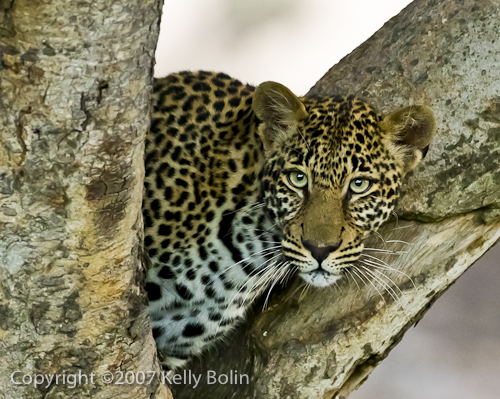
There is nothing better than a tack sharp shot of an interesting subject. Take for example the leopard with the depth in his eyes and sharp whiskers.
Using some or all of the quick tips below, will help you get more consistent sharp pictures.
- Use a Tripod – Using a tripod is as important as the quality of camera or lens you choose to use. I have several tripods made either by Gitzo or Manfrotto and depending on the use and application will determine which tripod I take with me. For example, if it’s going to be more studio or on location use with minimal carrying I will use my heavy aluminum Manfrotto. If I’m hiking for long distances, I have a light weight carbon fiber tripod, and finally I have a heavier carbon fiber tripod for short distance hikes for outdoor photography. Buy the best tripod and ballhead combination that you can afford.
- Other Stabilization – I won’t always have a tripod with me but the first thing I will do is look for something to prop my camera on for increased stabilization. Use a beanbag on the hood of the vehicle (with it turned off of course), perhaps a log or extended tree branch (be careful of windy conditions).
- Image Stabilization/Vibration Reduction Lenses – Canon, Nikon and other manufacturers have lenses with this capability and allow you to take sharper images by producing a more stable image coming through the lens. While these lenses are more expensive they do deliver superior results to non-IS/VR lenses.
- Bracing – Bracing your body against a pole or tree can also be helpful. When standing, be sure to stand with your legs at least shoulder width apart and keep your elbows in close to your body using your left elbow to brace against your torso. I do this regardless of whether I’m shooting with a DSLR or a point & shoot. Too often I see people shooting with their rear display LCD point & shoot with the camera held at arms length away from them. Bringing your elbows in against your body will provide for a much more stable platform to produce sharper pictures.
- Your body – Keep calm, breath easy, and press the shutter button without jerking the camera. The smoother you are when ready to press the trigger, the sharper your pictures will turn out.
- Remote release or self-timer – If you have a remote release or self-timer that can be used while mounted on a tripod then by all means use it.
- Mirror Lock-Up – One of the sources of vibration is the camera itself. The action of a mirror flipping up out of the way before the shutter opens causes vibration. Using your mirror lock-up function allows you to lock the mirror up first as one separate action before the shutter opens. This two-step action requires you to press the shutter button once to lock the mirror up, then press again to open the shutter to get an exposure.
- See #1 – Use a tripod!
Good luck and enjoy!
